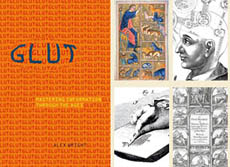The B�n Canon
July 20, 2006
While I was staying at Serenity Ridge last month, I became intrigued by one of its prized possessions, the B�n Canon.
The Canon very neraly failed to survive the Chinese invasion of Tibet. As the Chinese razed monasteries across the country during the Cultural Revolution, they destroyed every copy of the Canon except one, which a small group of B�n practitioners had managed to spirit out and hide in a small village. The monks guarded its location with their lives, enduring torture at the hands of Chinese soldiers determined to ferret out and destroy the last written record of Tibet's indigenous religion. Eventually, the B�npos found the means to sneak the Canon out to Nepal and eventually on to India. Now, a handful of new copies have been made, one of which was acquired by the Ligmincha Institute in 2003. It is the only copy anywhere outside Asia.

Stored in an exquisite hand-carved teak (I think) case, the Canon is at once both a book and a library. Like the Torah, it is a two-layered document, consisting of a set of original manuscripts (the Kangyur), accompanied by a set of commentaries (the Tengyur) written by later monastic scholars. The cabinet is divided into two broad sections: the left side contains the Kangyur, which in turn is divided into 62 volumes of sutra, 91 volumes of pranjaparamita, eighteen volumes of tantra, and four volumes of dzogchen; the right side contains the Tengyur, divided into 131 volumes of Yungdrung (old school) and 169 volumes of Sar ma (new school) texts. All of the texts were written before the 12th century; the Canon was codified in its current form in 1836.
I was particularly intrigued by the colorful tabs adorning each volume. I had originally thought these might be some sort of esoteric color-coded classification system; alas, it turns out they are only decorative, although they do serve to collocate multi-volume texts (each volume in a series shares the same design pattern). Beneath the colored tabs, each volume carries a "catalog card" containing brief bibliographic information and a number that cross-references it to an external index. In this sense, each text could be said to catalog itself.

Interestingly, the Greeks employed an almost identical bibliographical system in the Library of Alexandria. Given the well-documented Greek influence on early Buddhist art (thanks to Alexander the Great), one has to wonder whether the similarity is pure coincidence, or whether the techniques of Greek librarianship might have somehow made their way to the Tibetan plateau? This is, needless to say, pure and barely founded speculation on my part.

Today, the B�n Canon sits just a few miles down the road from the birthplace of another historically important library - Thomas Jefferson's - which ultimately formed the backbone for the Library of Congress. It seems fitting that this endangered set of religious texts should have found safe haven in the shadow of Jefferson, the great American bibliophile and guardian of religious freedom. Indeed, had it not been for Jefferson, one has to wonder whether the B�n teachings would ever have found refuge here?
tags: B�n, libraries, Thomas Jefferson
File under: Books
_____________________« A Week With The Bönpos | The Twilight of American Culture »
GLUT:
Mastering Information Through the Ages
New Paperback Edition
“A penetrating and highly entertaining meditation on the information age and its historical roots.”
—Los Angeles Times

